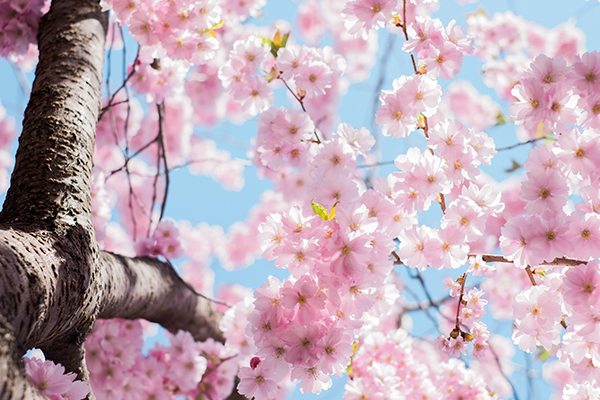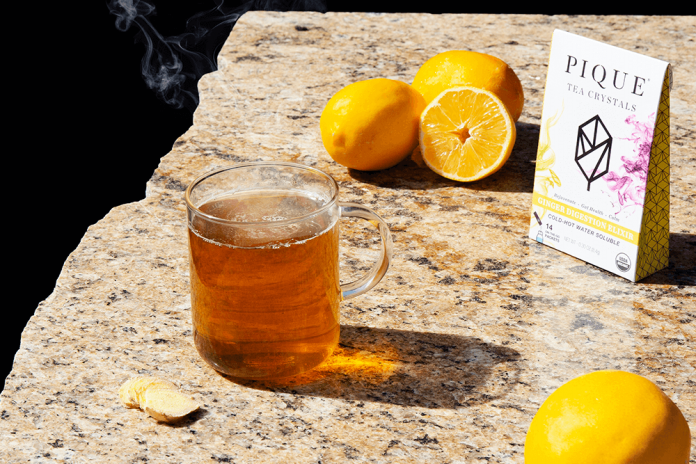Ever heard someone say they’re more likely to fall sick when the seasons change?
Human bodies are complicated organisms, and they go through cycles, just like every living thing in the universe. Traditional Chinese Medicine (TCM) views the body as a microcosm that mirrors the larger macrocosm of the universe.
It’s believed that we experience this connection most strongly during the change of seasons. Because the energetic shifts that occur during the seasonal changes are reflected in our physical and emotional selves, it is important to adopt ways to support these transitions.
Spring is especially dynamic and dramatic in its shift from Winter! That’s why we wanted to share some helpful tips to support your body during this time of year.
The Importance of Seasonal Transitions
As the seasons change, we can see a series of transformations in the world around us.
The abundance of green growth in the heat of summer gives way to cool breezes and crisp leaves of Autumn. As the trees become bare and the earth freezes in Winter, the days become long and dark. And in Spring, new growth pushes through the defrosting soil as days become longer and new life buds from the Earth.
Just as these transitions occur in nature, unique changes also occur within the human body at each change in season.
Characteristics of the Transition from Winter to Spring
In Chinese Medicine, Spring is associated with the Wood element and the Liver and Gallbladder organ and channel system.
The Liver system’s energetics are responsible for the free flow of energy in the body, physically and emotionally. Like the growth of new plants in Spring, the movement of the Liver system is upward and outward.
Transitioning from the depths of Winter into the first days of Spring brings a large shift to our external environments – a change that is also reflected in our bodies and minds.
In Chinese Medicine, Winter is associated with the Kidney system, our source of Qi or vital energy, and it is a time of restoration and retreating inward. Resting in the Winter ensures that we enter into Spring healthy and vital.
Moving from this dark, cold, stillness to a season of movement, growth, and light can be supported through subtle lifestyle and dietary adjustments and can help manage existing imbalances that may surface at this time.
What to Expect During the Spring Transition
In TCM, this is a transition from a season of Yin to a season of Yang: dark to light, death to growth, and cold to warmth.
Similar to how new growth begins to push through the frozen Earth in Spring, that energetic blueprint is also present in our bodies and minds. Reflective of this bursting forth of new growth, budding flowers, and sprouting leaves, the Wood element characteristics are persistence, creative potential, and also the emotion anger.
Because the Liver meridian system is responsible for the free flow of vital energy and emotions, imbalances can surface at this time of transition and can present emotionally and physically. One may notice feelings of restlessness, irritability, impatience, difficulty making decisions, mental rigidity, resentment, emotional outbursts, anxiety and depression, quick to anger, and rashness. Physically, imbalance can present as muscle tension, premenstrual syndrome, breast tenderness, headaches, elevated blood pressure, bitter taste in the mouth, rib side pain and distension, menstrual irregularities, and digestive issues.
In contrast, signs of a healthy Liver and Gallbladder system are joy, feeling inspired, fulfilled, assertive, decisive, forgiving, vibrant and healthy.
How to Support your Body in the Transition to Spring
Transitional phases bring many new changes and may be eased with simple lifestyle adjustments. Supporting the Liver and Gallbladder organ and channel systems through diet and lifestyle may help make for a smoother transition. Try playing with the following tips!
Dietary Recommendations
Foods to Include are organic vegetables including dark green, leafy vegetables such as dandelion greens, chard, arugula, and watercress.
Choose organic, hormone-free meat. Chemicals are overtaxing on the Liver so opt for hormone-free and organic.
Start your mornings with water with lemon and try cooking with pungent and sweet herbs such as rosemary, fennel, caraway, oregano, citrus, vinegar, and dill.
Foods to Limit are greasy, fatty and fried foods which are particularly taxing on your Liver.
Caffeine and alcohol should also be limited if you are experiencing the emotional or physical imbalances mentioned above. While consuming these may feel relieving in the moment, they may exacerbate any imbalances of the channel system.
It is also important to only eat until you’re full and avoid overeating as this can cause stagnation in the digestive system.
Lifestyle Suggestions
1. Healthy Expressions of Emotions and Spring Cleaning
In TCM, the Liver is responsible for the free flow of energy, emotions, and blood in the body. It is largely affected by the emotion of anger.
Feeling frustrated, irritable, and stressed may point to an imbalance in this system, but chronic experiences of these emotions themselves may also lead to imbalance. Finding healthy ways to express and manage emotions will help support the Liver system and a smoother transition to Spring.
Look for ways to reduce stress and ask for help if needed. Try working through emotions and stress with journaling, creating art, laughter, or working with a licensed therapist.
Spring feels like a fresh start. Similar to clearing out our homes and physical spaces, according to TCM, Spring is a time to let go of what no longer serves you emotionally as well. It is a time to welcome fresh perspectives and let go of ideas of how things should have been or how they should be.
This is also a good time to practice forgiveness of self and others.
2. Movement
Movement helps to circulate the energy of the body. Because the Liver is responsible for the smooth flow of blood and emotions throughout the body, it is the system most affected by stagnation.
As the energy levels in the environment rise with the start of Spring, you may find yourself feeling more restless. Try incorporating more movement into your daily routine with light jogging, yoga, brisk walks, dancing, or a movement that feels best to you. Just as the season takes its time to shift into full bloom, take your time in this transition as your body and mind are slowly waking up from winter. Aim for around 30 minutes of exercise a day.
3. Protect from the Wind
Don’t put away those coats just yet! Spring weather is often unpredictable and windy. As the temperatures rise, some days may still remain cool. Protect yourself from wind and keep warm to maintain optimal health while adjusting to the new season by carrying a light scarf with you and wearing layers.
In Chinese medicine, the Liver channel system is more susceptible to the element of wind. Additionally, the nape of the neck is particularly vulnerable to wind and drafts (it is actually referred to as the windgate!). Layer up and don’t forget your scarf!
Tea Recommendations for Spring
In Spring, choose white teas such as White Peony, floral teas, and teas to support gut health. Swap out your Chai and black tea from the winter and hold off on cooling teas like green tea until the temperatures heat up.
If you are sensitive to caffeine, opt for a caffeine-free herbal tea. Research shows substances in Milk thistle may also support a healthy liver function. [i]
Always consult your healthcare provider before making any dietary or lifestyle changes.
Spring Wisdom
Imagine a forest of trees. These trees illustrate an example of a healthy Wood element, the element associated with Spring. They are rooted, yet flexible. When wind comes, the branches bend and sway relative to the strength of the wind. Their strong roots allow them to bend without falling over, yet they are flexible enough to not resist the movement or snap.
The image of the forest reminds us to stay calm, flexible, and unbothered by fleeting deviations from our path instead of becoming tense and rigid.
Welcome this wisdom of the Wood element and invite flexibility into your awareness as we shift from the depths of winter to the brightness of Spring. Support the Liver and Gallbladder systems by making these adjustments to lifestyle and diet and enjoy living in tune with the season!






